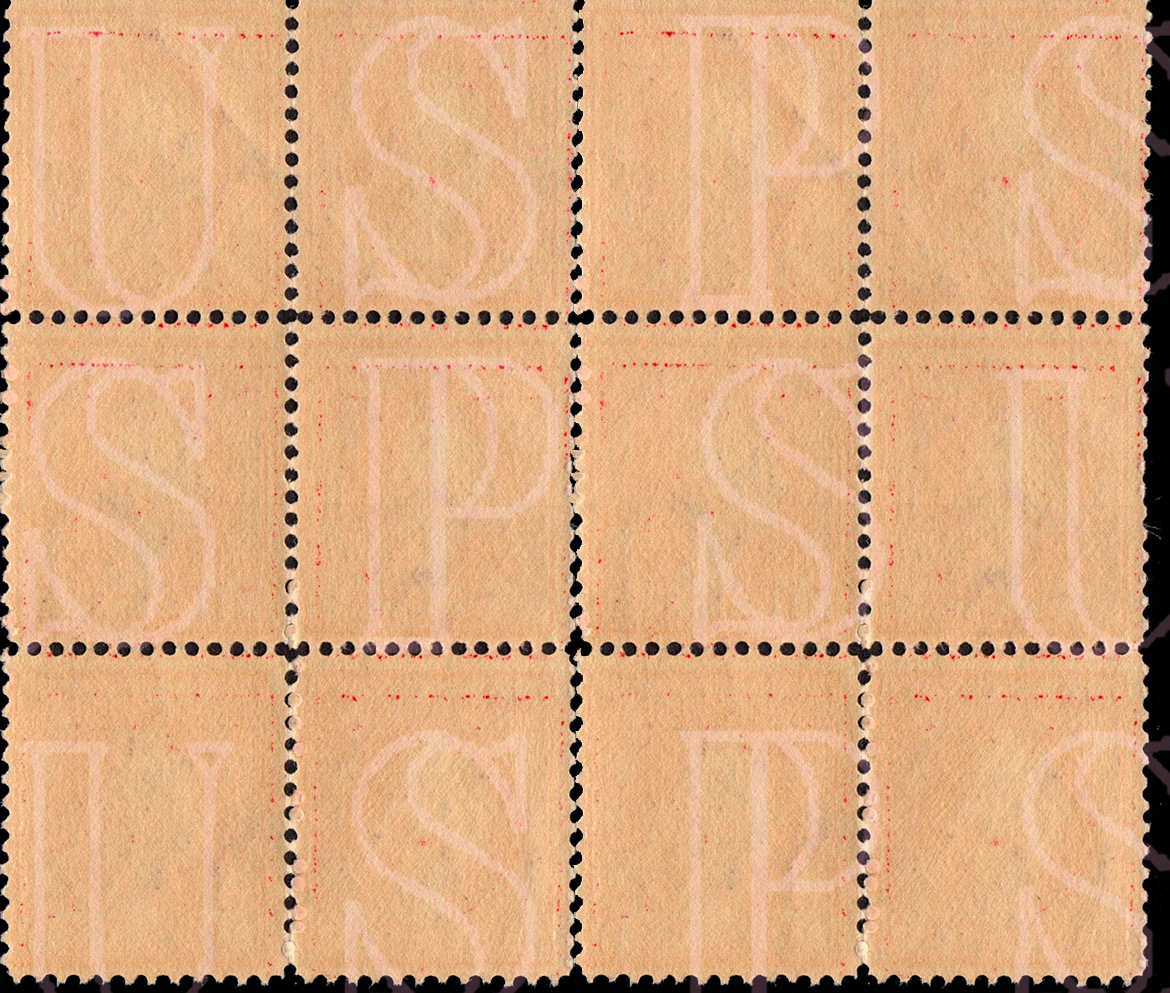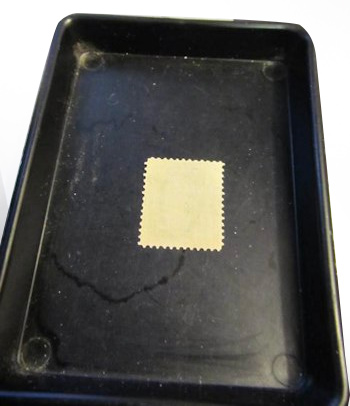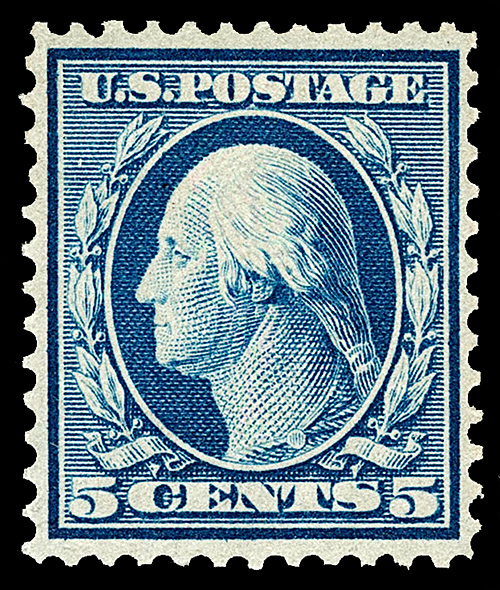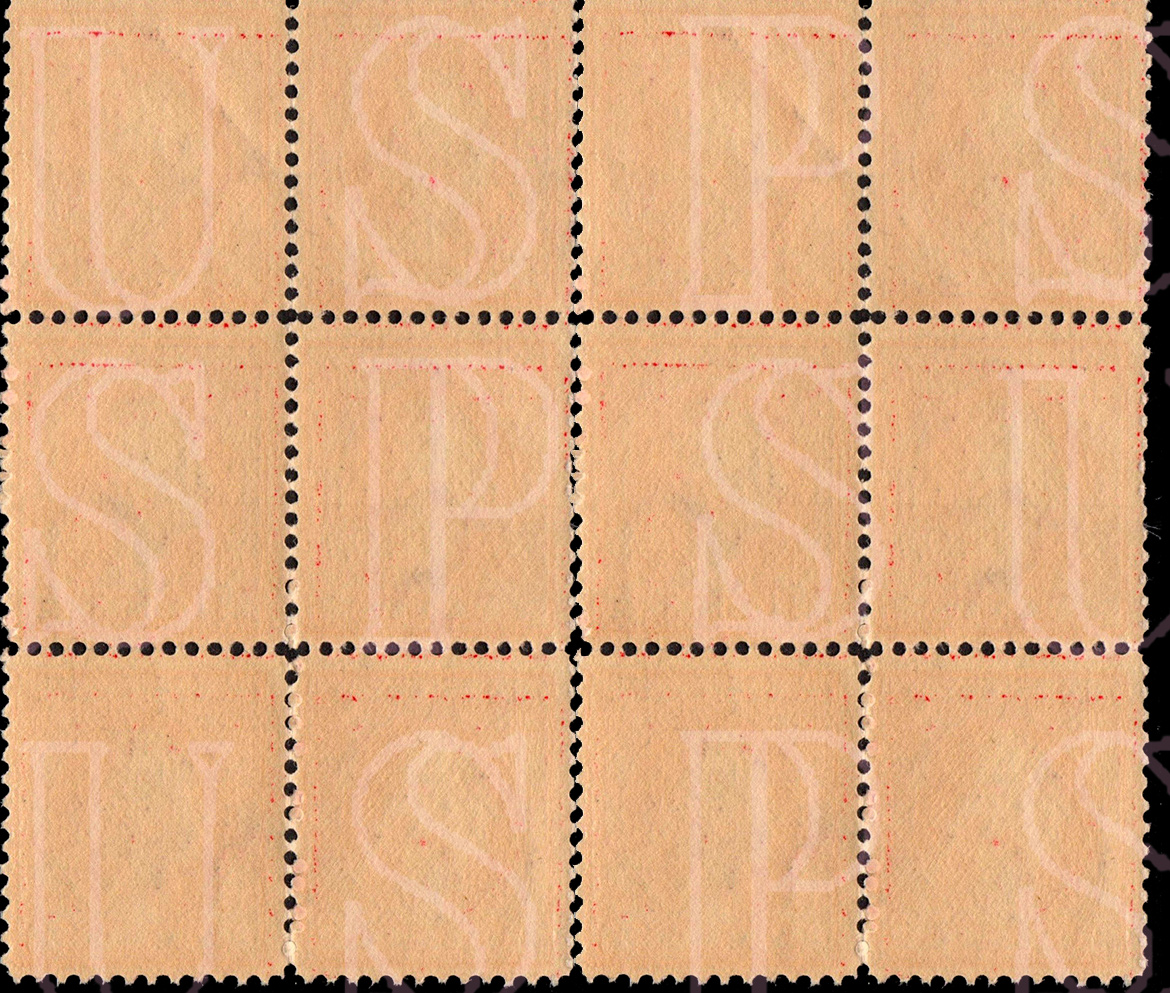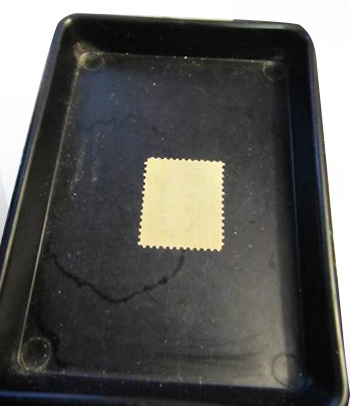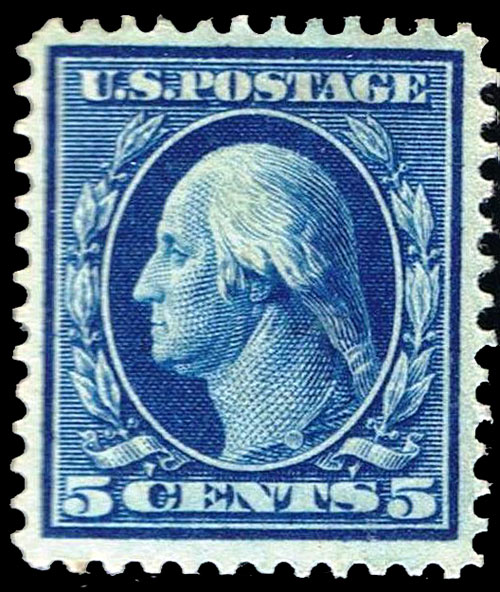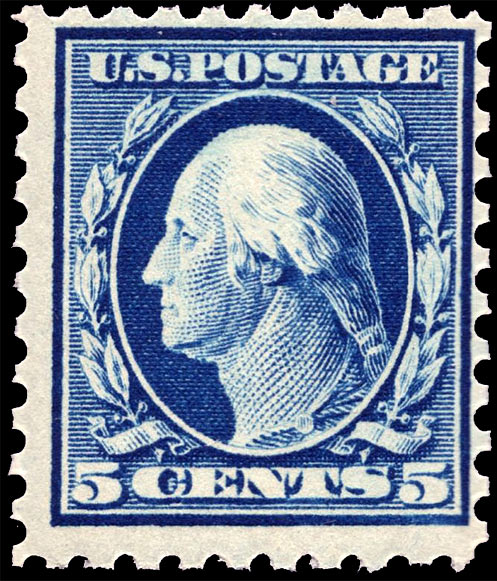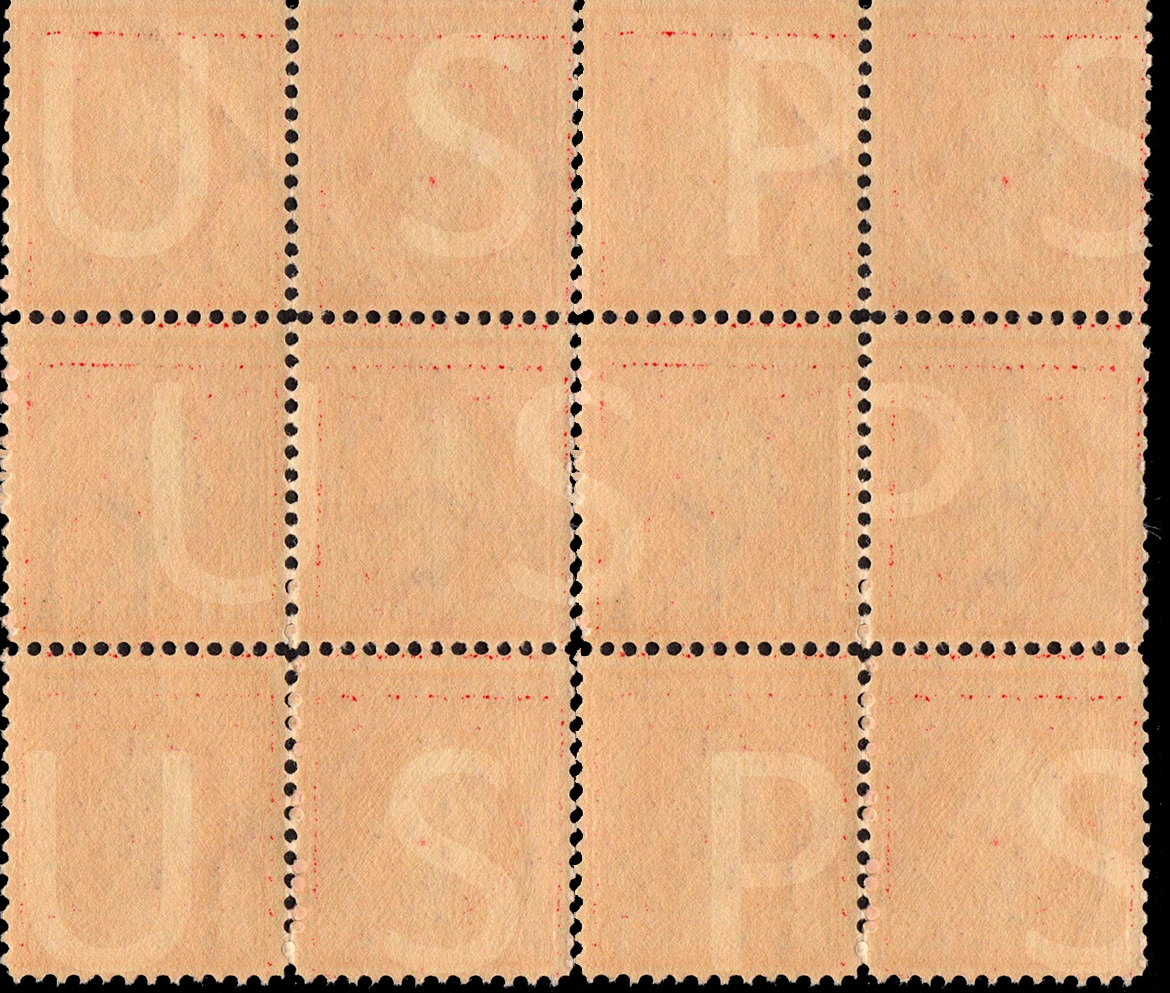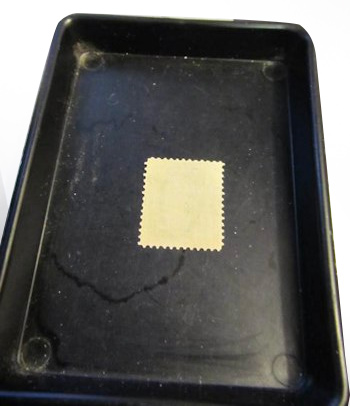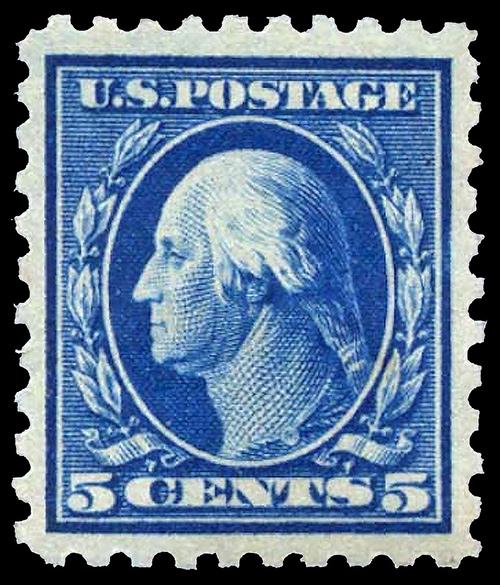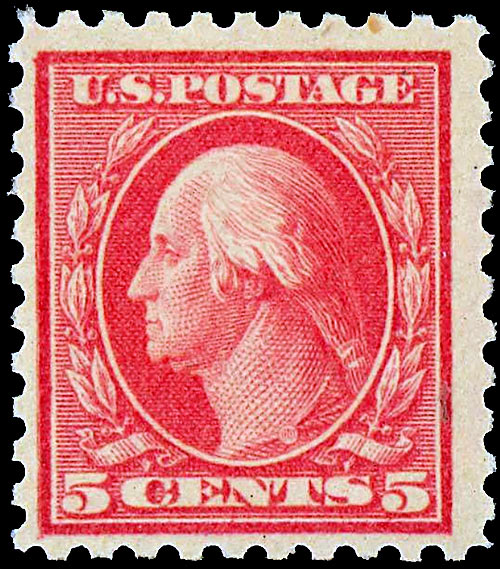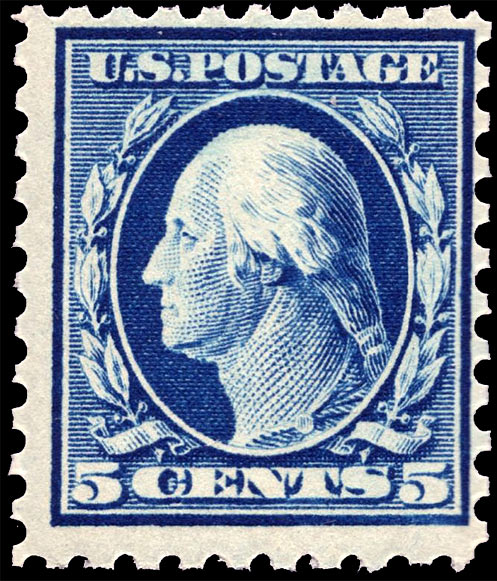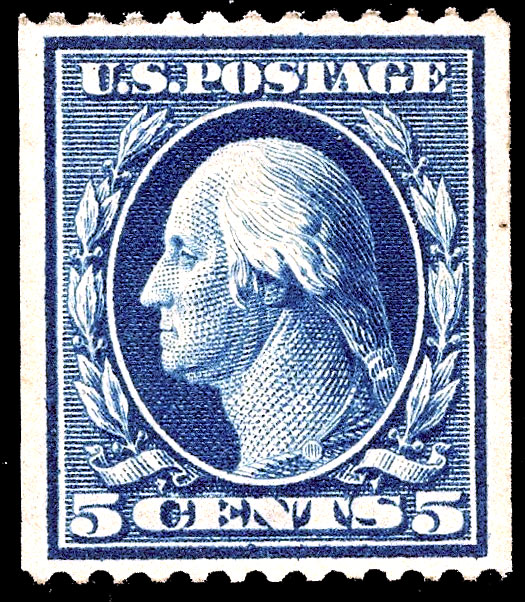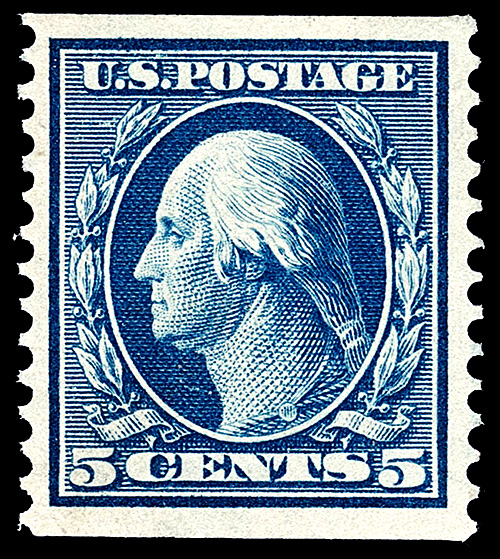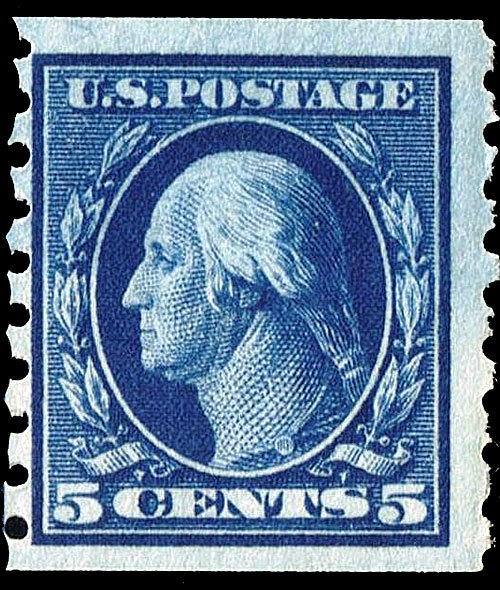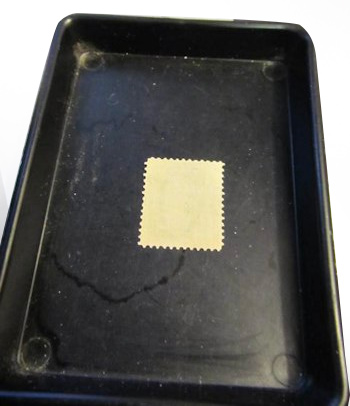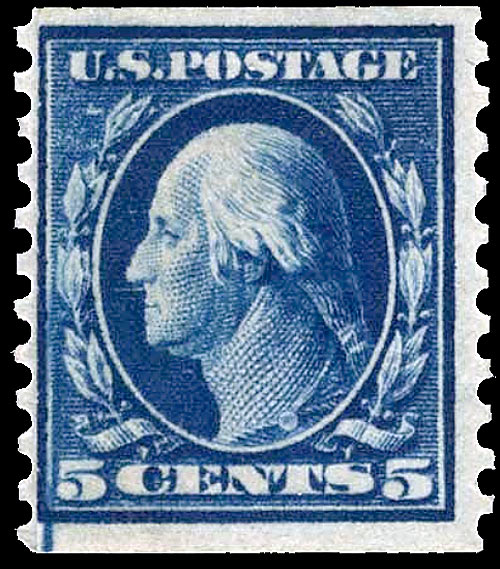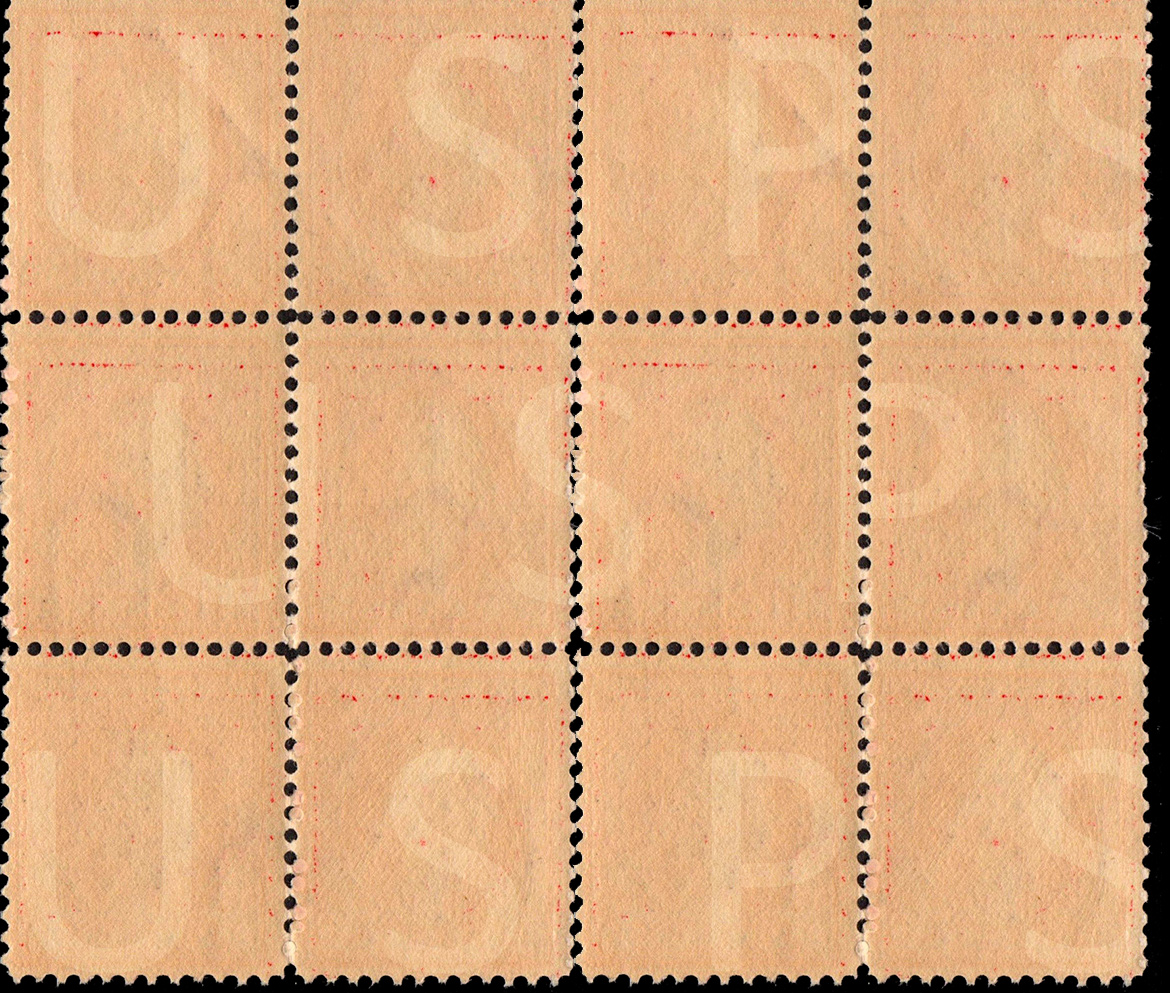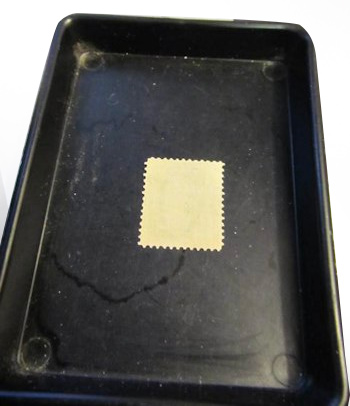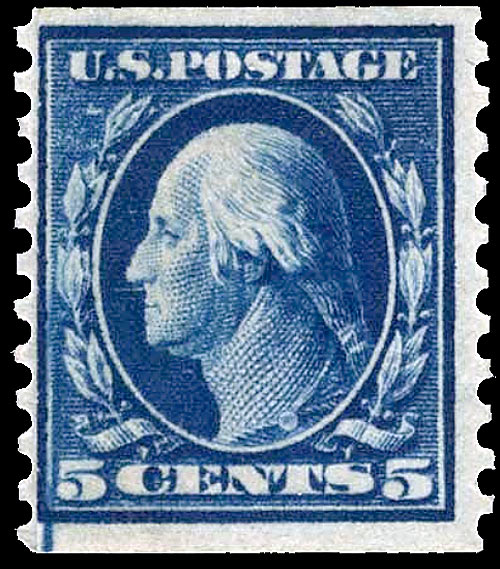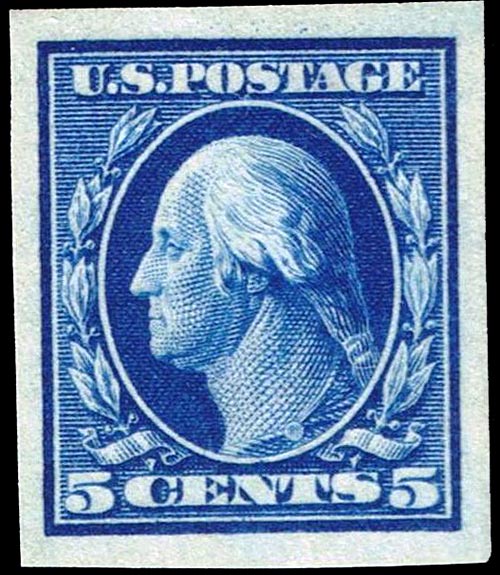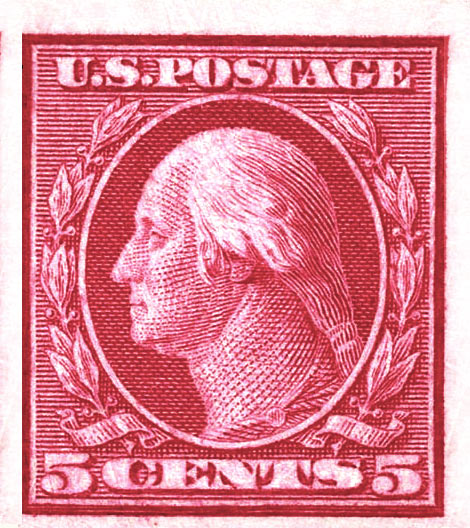Which 5¢ stamp?
How to determine which perforation
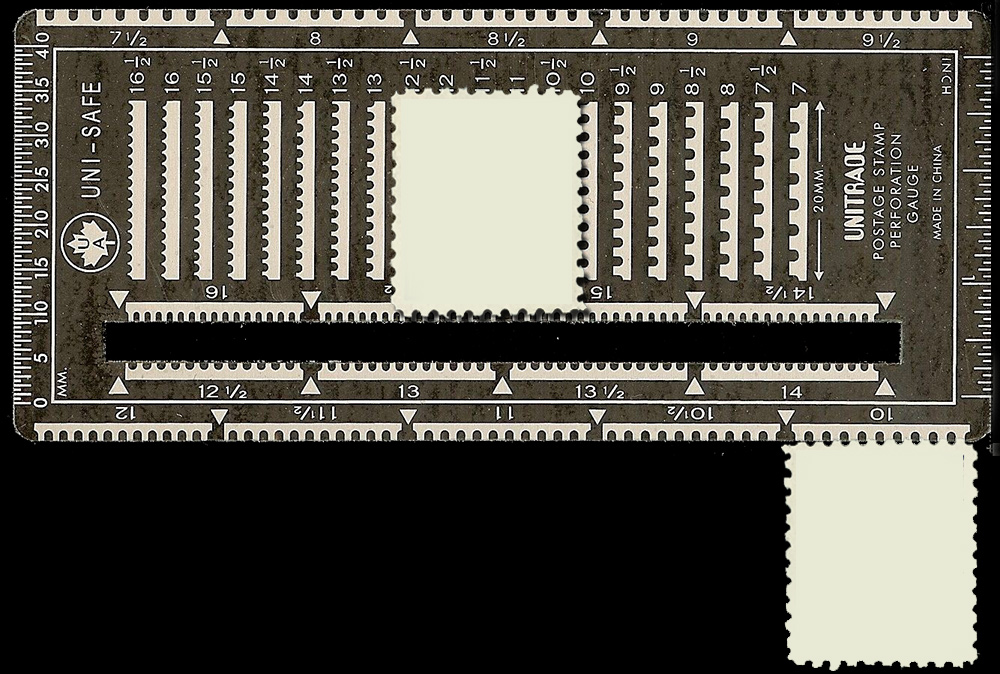
Probably the most referenced measurement in stamps are the watermark and the perforation size. Perforation gauges as seen above cost just a few dollars and are an invaluable tool in philately. By placing the stamp, as shown above against the various illustrations of perforation gauges you can see which gauge matches the perforation on your stamp. In the example above the stamp is a perf 10 on the top and on the side. It is a good idea to measure both the vertical and horizontal sides as some stamps are perforated 11 x 10, 10 x 11, etc. The top perforation is always quoted first on this site and in stamp catalogues.
Perforated on all sides
12 Perforations
Watermarks
Between 1895 and 1916 the U.S. government used two different watermarks, double line and single line with the letters "USPS".
By placing the watermark face down on a dark surface or holding it up to bright light you might be able to see the watermark. If on the 1895 to 1916 stamp you cannot see the watermark it might be a good idea to invest in Watermark fluid and a watermark tray (examples are shown later). Ronsons lighter fluid works just as well as watermark fluid. Both fluids evaporate quickly.
Put enough fluid in the bottom of the tray, lay the stamp face down. In a few seconds the stamp will absorb the fluid and reveal the watermark to you.
As you will see from the illustrations the letters can span several stamps, so on the watermark, for instance, you can see only part of the letter S in one corner and only part the letter P in the other corner.
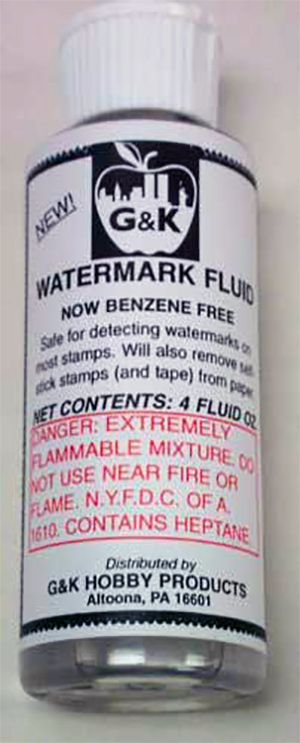
12 Perforations
Watermarks
Between 1895 and 1916 the U.S. government used two different watermarks, double line and single line with the letters "USPS".
By placing the watermark face down on a dark surface or holding it up to bright light you might be able to see the watermark. If on the 1895 to 1916 stamp you cannot see the watermark it might be a good idea to invest in Watermark fluid and a watermark tray (examples are shown later). Ronsons lighter fluid works just as well as watermark fluid. Both fluids evaporate quickly.
Put enough fluid in the bottom of the tray, lay the stamp face down. In a few seconds the stamp will absorb the fluid and reveal the watermark to you.
As you will see from the illustrations the letters can span several stamps, so on the watermark, for instance, you can see only part of the letter S in one corner and only part the letter P in the other corner.
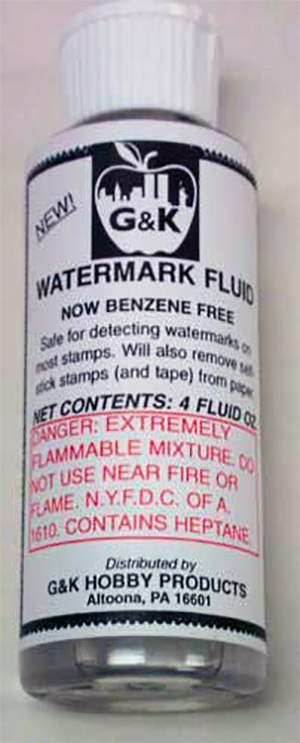
Bluish Paper
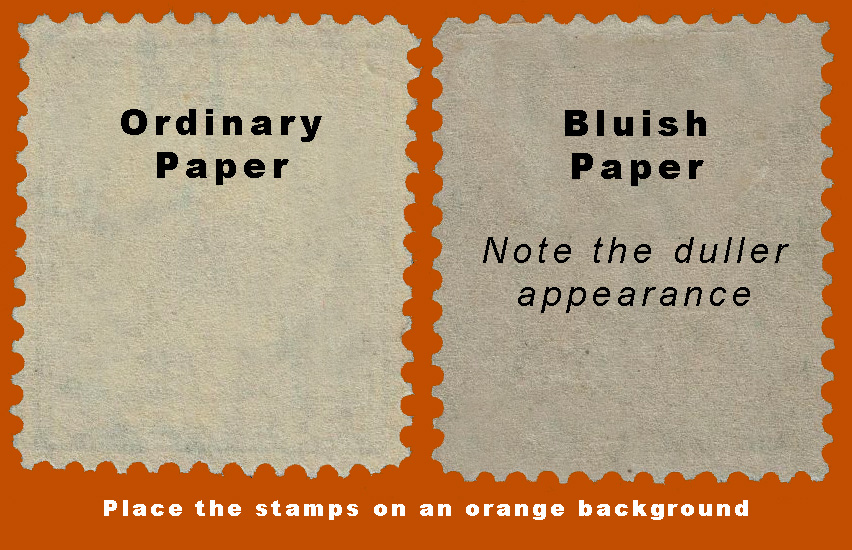
12 Perforations
Watermarks
Between 1895 and 1916 the U.S. government used two different watermarks, double line and single line with the letters "USPS".
By placing the watermark face down on a dark surface or holding it up to bright light you might be able to see the watermark. If on the 1895 to 1916 stamp you cannot see the watermark it might be a good idea to invest in Watermark fluid and a watermark tray (examples are shown later). Ronsons lighter fluid works just as well as watermark fluid. Both fluids evaporate quickly.
Put enough fluid in the bottom of the tray, lay the stamp face down. In a few seconds the stamp will absorb the fluid and reveal the watermark to you.
As you will see from the illustrations the letters can span several stamps, so on the watermark, for instance, you can see only part of the letter S in one corner and only part the letter P in the other corner.
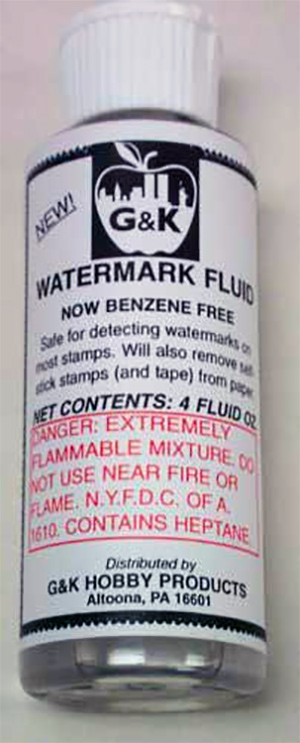
10 Perforations
Watermarks
Between 1895 and 1916 the U.S. government used two different watermarks, double line and single line with the letters "USPS".
By placing the watermark face down on a dark surface or holding it up to bright light you might be able to see the watermark. If on the 1895 to 1916 stamp you cannot see the watermark it might be a good idea to invest in Watermark fluid and a watermark tray (examples are shown later). Ronsons lighter fluid works just as well as watermark fluid. Both fluids evaporate quickly.
Put enough fluid in the bottom of the tray, lay the stamp face down. In a few seconds the stamp will absorb the fluid and reveal the watermark to you.
As you will see from the illustrations the letters can span several stamps, so on the watermark, for instance, you can see only part of the letter S in one corner and only part the letter P in the other corner.

10 Perforations
Watermarks
No watermark
Sometimes the watermark may be very faint, sometimes just the edge of a one of the letters will show, in either case look carefully for the watermark. If there is no sign of a watermark then you can safely put this stamp under the category of 'No Watermark'
Single line letters
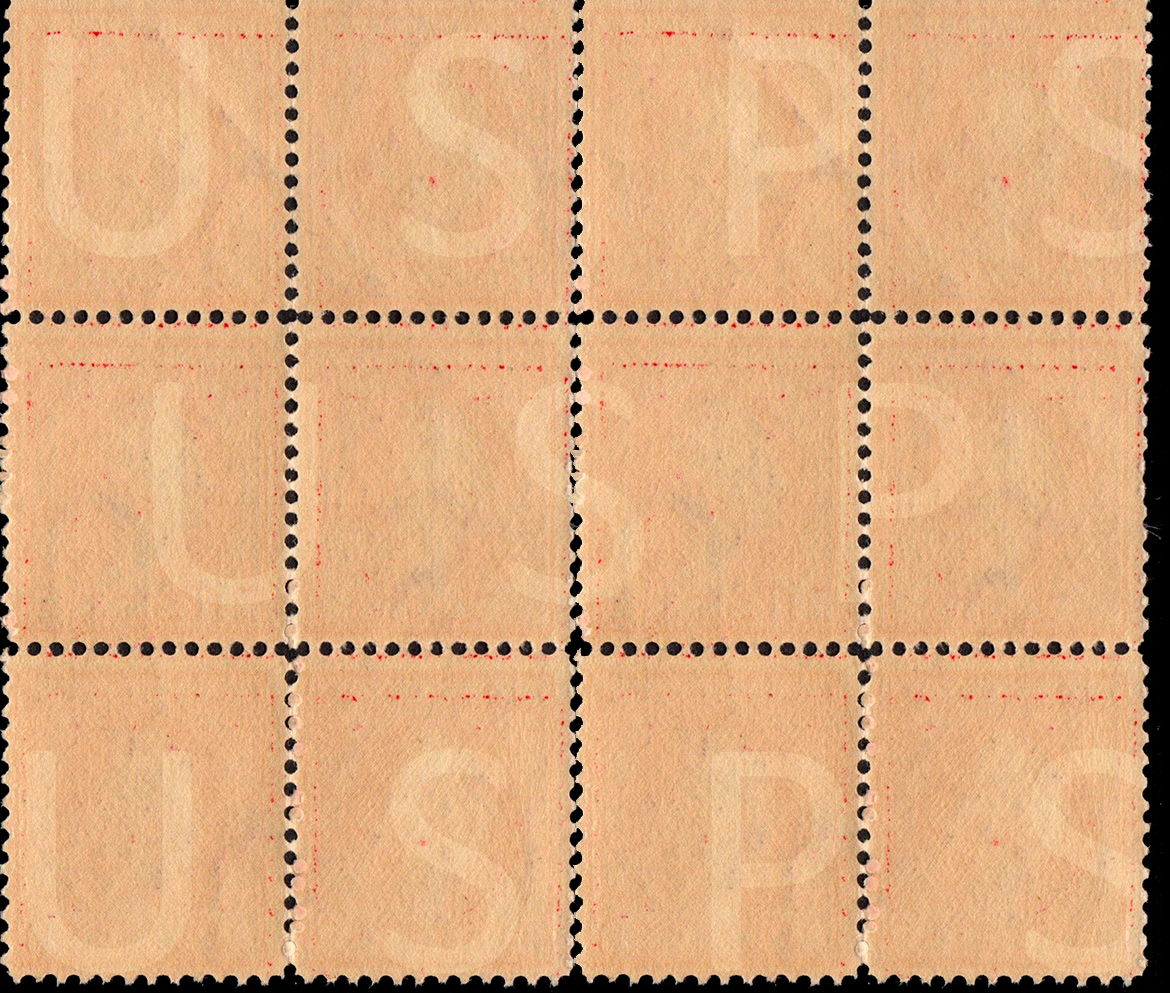
Double line letters
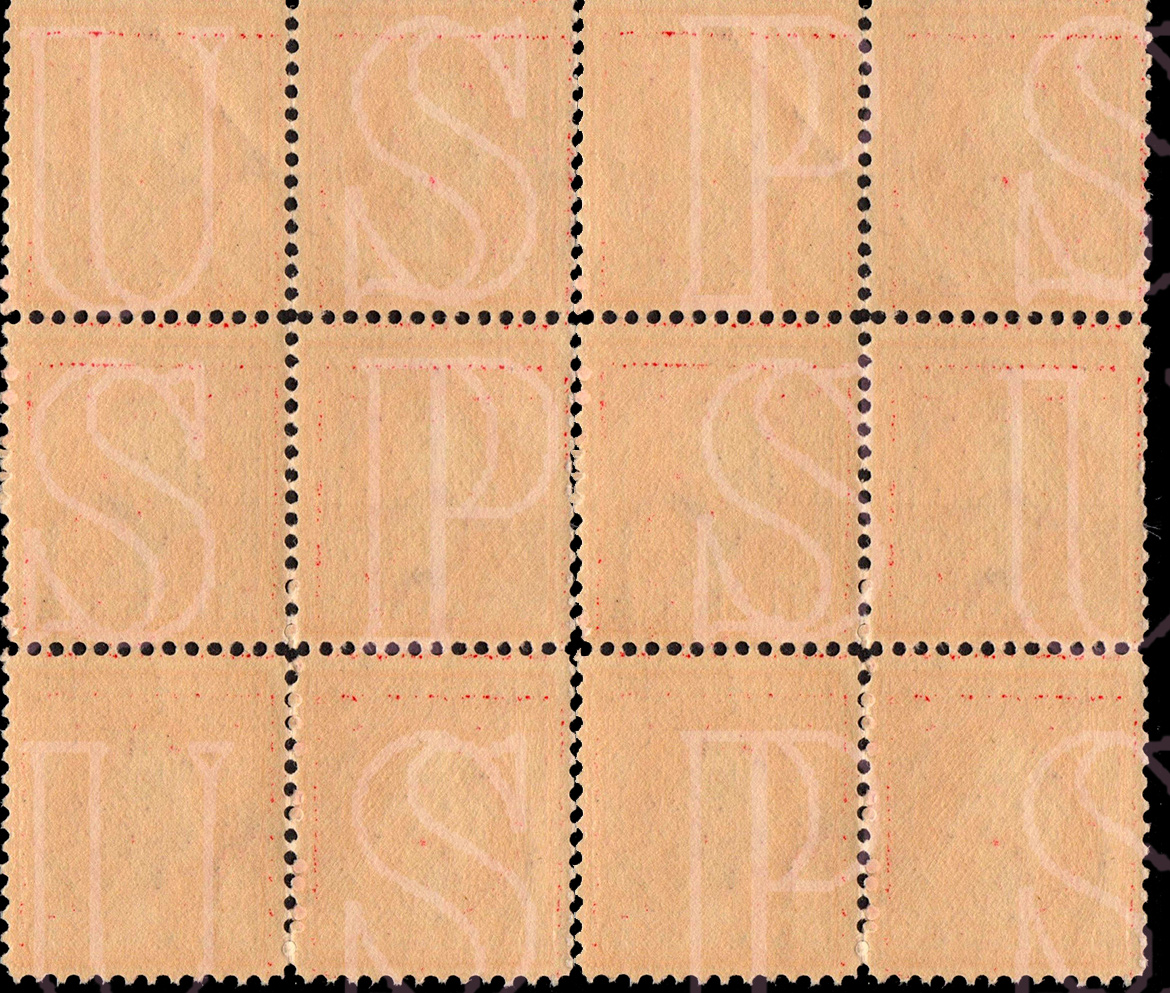
Between 1895 and 1916 the U.S. government used two different watermarks, double line and single line with the letters "USPS".
By placing the watermark face down on a dark surface or holding it up to bright light you might be able to see the watermark. If on the 1895 to 1916 stamp you cannot see the watermark it might be a good idea to invest in Watermark fluid and a watermark tray (examples are shown later). Ronsons lighter fluid works just as well as watermark fluid. Both fluids evaporate quickly.
Put enough fluid in the bottom of the tray, lay the stamp face down. In a few seconds the stamp will absorb the fluid and reveal the watermark to you.
As you will see from the illustrations the letters can span several stamps, so on the watermark, for instance, you can see only part of the letter S in one corner and only part the letter P in the other corner.
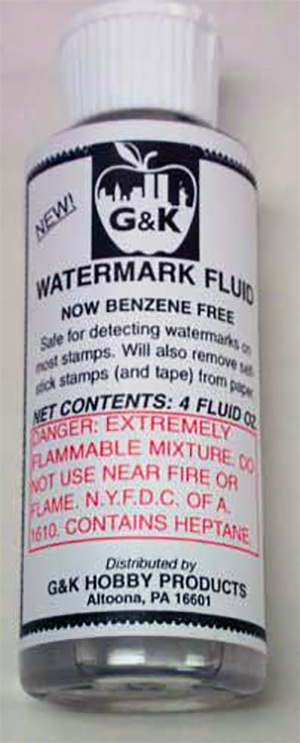
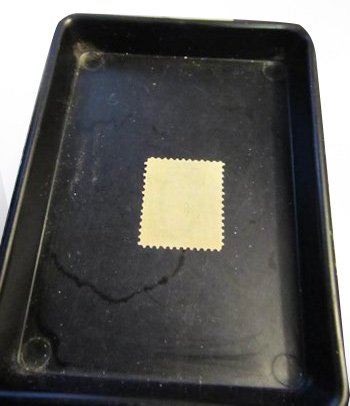
Perforated horizontally
Perforated vertically
10 Perforations
Watermarks
Between 1895 and 1916 the U.S. government used two different watermarks, double line and single line with the letters "USPS".
By placing the watermark face down on a dark surface or holding it up to bright light you might be able to see the watermark. If on the 1895 to 1916 stamp you cannot see the watermark it might be a good idea to invest in Watermark fluid and a watermark tray (examples are shown later). Ronsons lighter fluid works just as well as watermark fluid. Both fluids evaporate quickly.
Put enough fluid in the bottom of the tray, lay the stamp face down. In a few seconds the stamp will absorb the fluid and reveal the watermark to you.
As you will see from the illustrations the letters can span several stamps, so on the watermark, for instance, you can see only part of the letter S in one corner and only part the letter P in the other corner.

Flat Plate or Rotary Press?
As the curved plates of the Rotary press made the stamps slightly larger it is relatively easy to discern which stamp is flat plate and which is a rotary press stamp. First select any perf Washington Franklin stamp or the first issue Washington Franklin 1 cent or 2 cent. These are the stamps with the numbers one and two spelt out, instead of numbers being displayed. I chose the latter alternative as shown in the first image above.
Then cut out squares at each corner. As shown in the second image above. Placing the stamp you wish to test under your cut out stamp you can see if the frame lines match. If, as in the last image shown above the frame lines are outside the top stamp in either the top, bottom or sides then you have a rotary stamp. If the lines are in the same place, as shown in the third image, you have a flat plate stamp.
This test works with any value stamp.

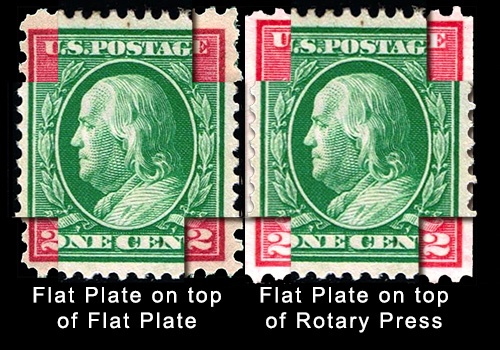
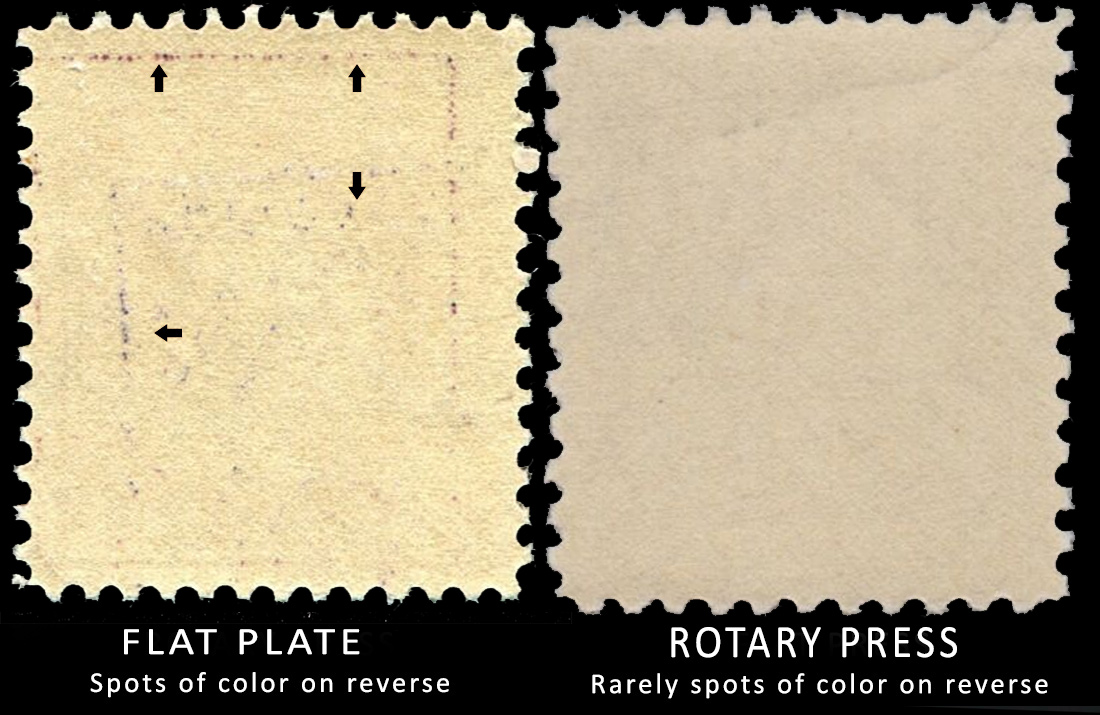
The image above left is a perfect example of the reverse of a flat plate stamp. The flecks of ink on the reverse can be found on flat plate stamps and are rare on rotary press stamps. The cause of the flecks of ink is that during the flat plate process the sheets were placed on top of each other before the ink had a chance to dry properly.
10 Perforations
Watermarks
Between 1895 and 1916 the U.S. government used two different watermarks, double line and single line with the letters "USPS".
By placing the watermark face down on a dark surface or holding it up to bright light you might be able to see the watermark. If on the 1895 to 1916 stamp you cannot see the watermark it might be a good idea to invest in Watermark fluid and a watermark tray (examples are shown later). Ronsons lighter fluid works just as well as watermark fluid. Both fluids evaporate quickly.
Put enough fluid in the bottom of the tray, lay the stamp face down. In a few seconds the stamp will absorb the fluid and reveal the watermark to you.
As you will see from the illustrations the letters can span several stamps, so on the watermark, for instance, you can see only part of the letter S in one corner and only part the letter P in the other corner.

Flat Plate or Rotary Press?
As the curved plates of the Rotary press made the stamps slightly larger it is relatively easy to discern which stamp is flat plate and which is a rotary press stamp. First select any perf Washington Franklin stamp or the first issue Washington Franklin 1 cent or 2 cent. These are the stamps with the numbers one and two spelt out, instead of numbers being displayed. I chose the latter alternative as shown in the first image above.
Then cut out squares at each corner. As shown in the second image above. Placing the stamp you wish to test under your cut out stamp you can see if the frame lines match. If, as in the last image shown above the frame lines are outside the top stamp in either the top, bottom or sides then you have a rotary stamp. If the lines are in the same place, as shown in the third image, you have a flat plate stamp.
This test works with any value stamp.
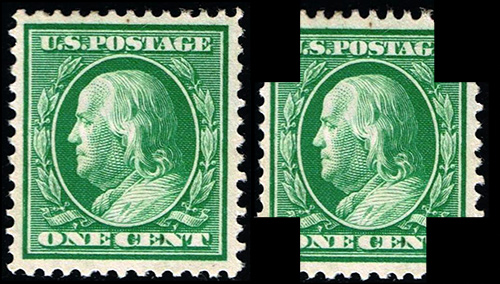
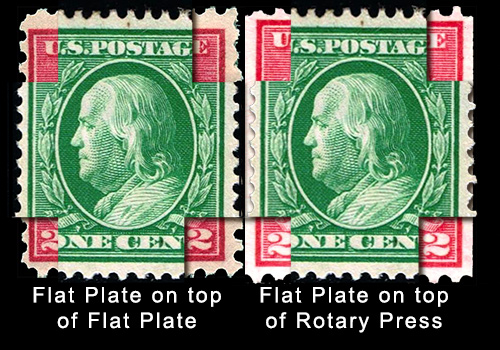
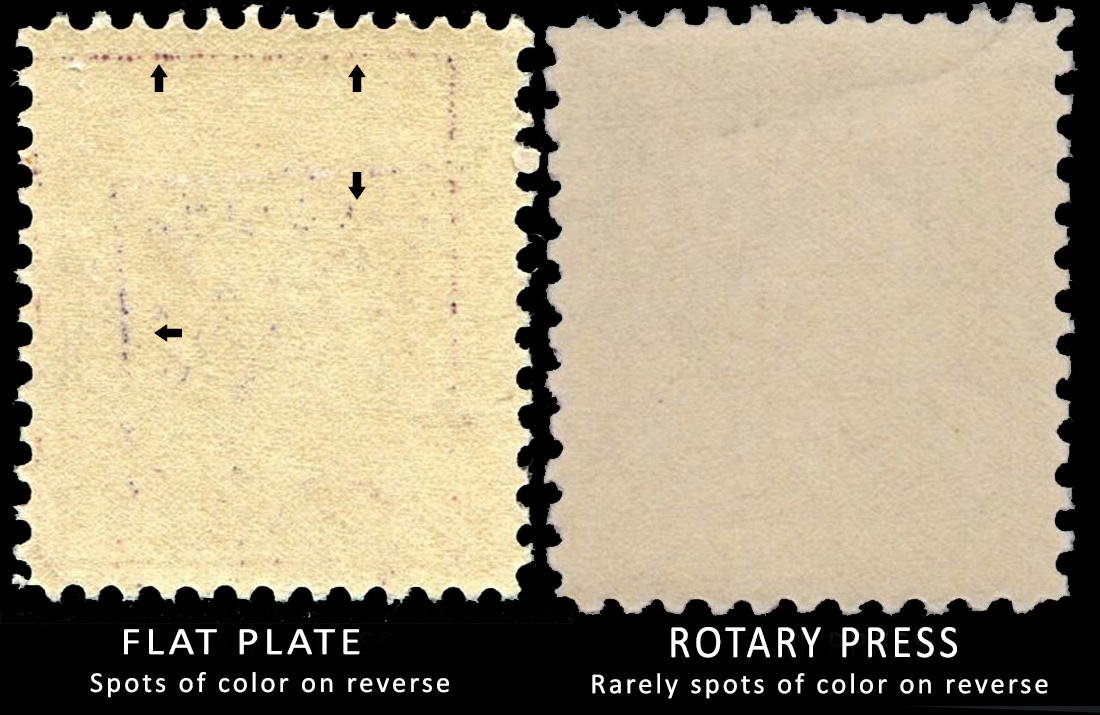
The image above left is a perfect example of the reverse of a flat plate stamp. The flecks of ink on the reverse can be found on flat plate stamps and are rare on rotary press stamps. The cause of the flecks of ink is that during the flat plate process the sheets were placed on top of each other before the ink had a chance to dry properly.
10 Perforations
Watermarks
No watermark
Sometimes the watermark may be very faint, sometimes just the edge of a one of the letters will show, in either case look carefully for the watermark. If there is no sign of a watermark then you can safely put this stamp under the category of 'No Watermark'
Single line letters
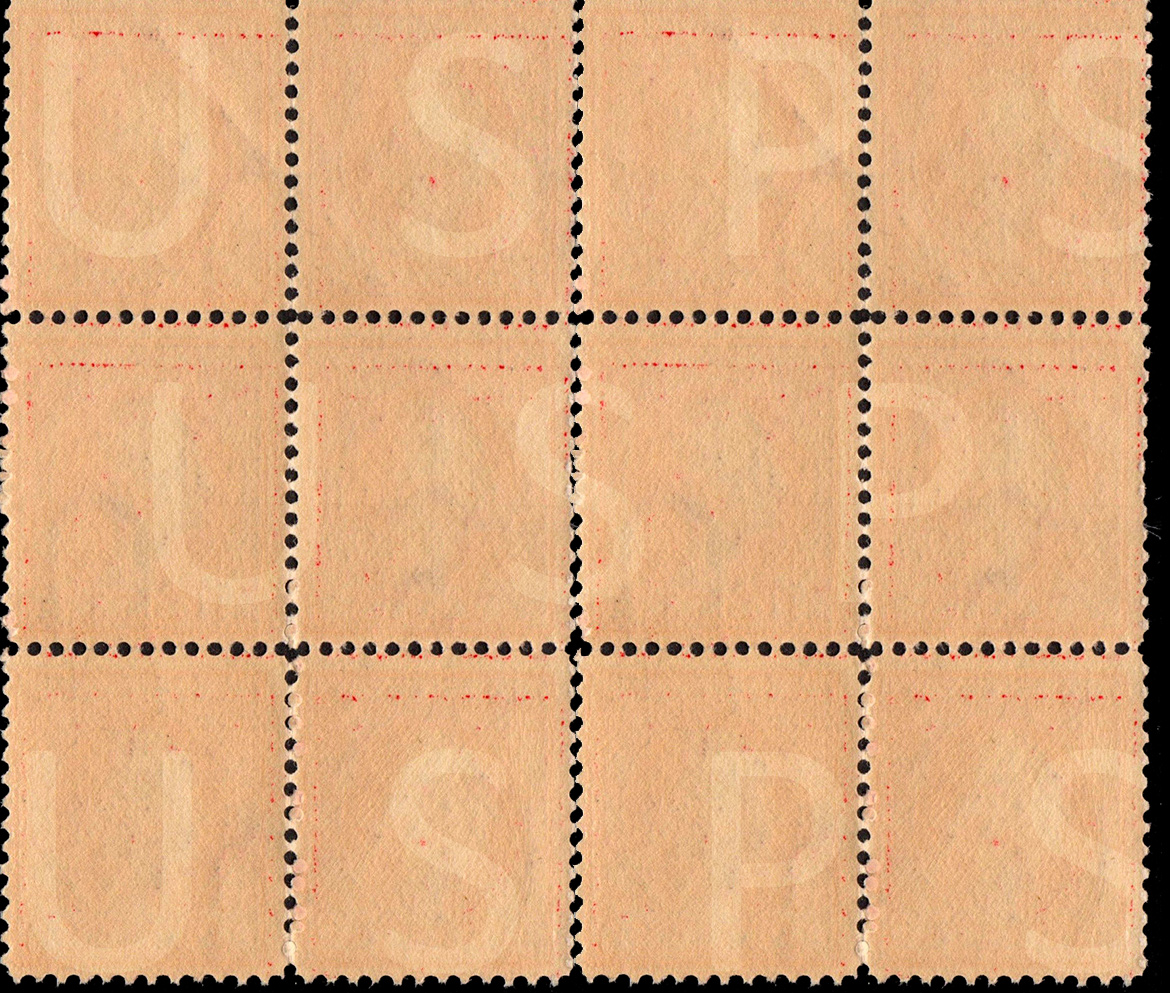
Double line letters
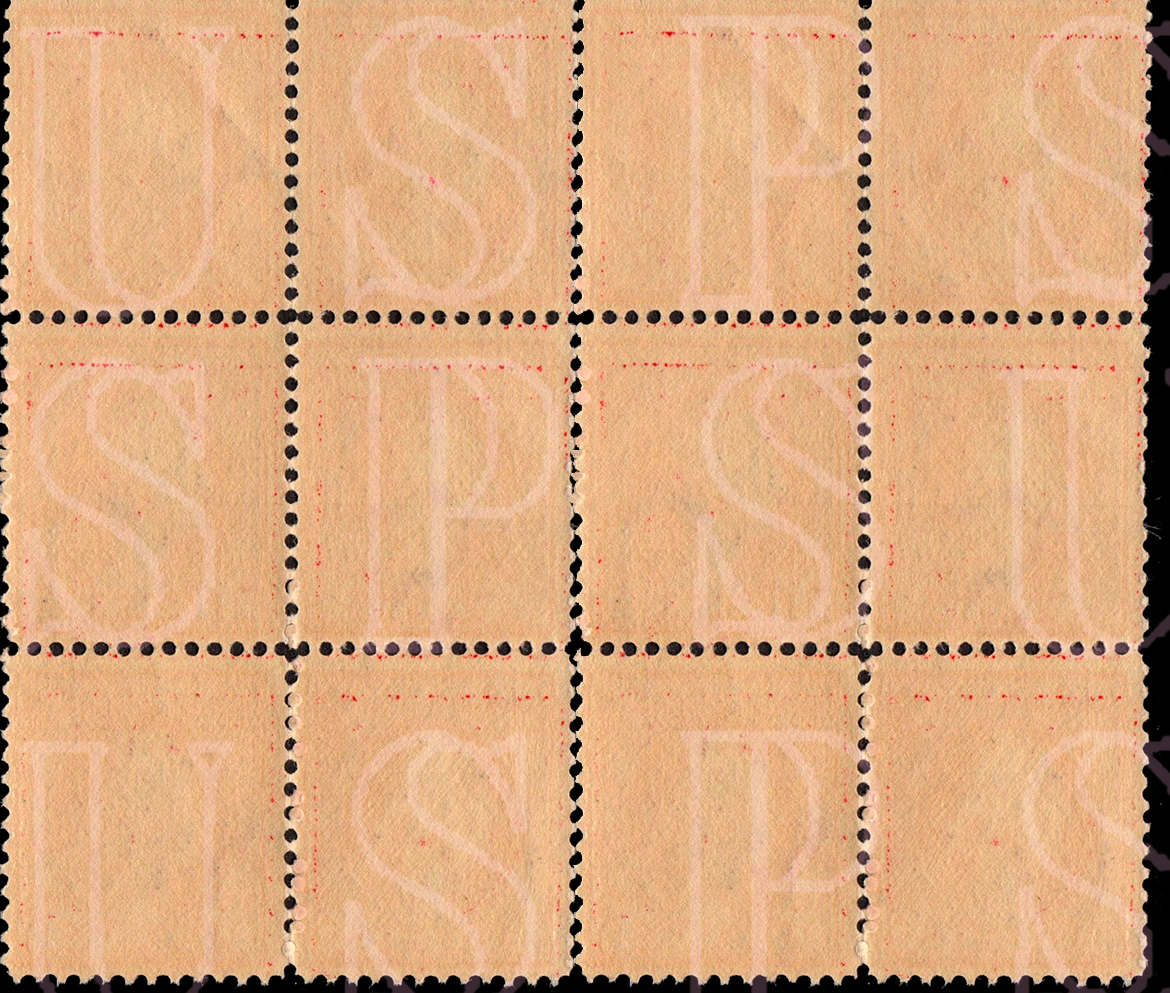
Between 1895 and 1916 the U.S. government used two different watermarks, double line and single line with the letters "USPS".
By placing the watermark face down on a dark surface or holding it up to bright light you might be able to see the watermark. If on the 1895 to 1916 stamp you cannot see the watermark it might be a good idea to invest in Watermark fluid and a watermark tray (examples are shown later). Ronsons lighter fluid works just as well as watermark fluid. Both fluids evaporate quickly.
Put enough fluid in the bottom of the tray, lay the stamp face down. In a few seconds the stamp will absorb the fluid and reveal the watermark to you.
As you will see from the illustrations the letters can span several stamps, so on the watermark, for instance, you can see only part of the letter S in one corner and only part the letter P in the other corner.
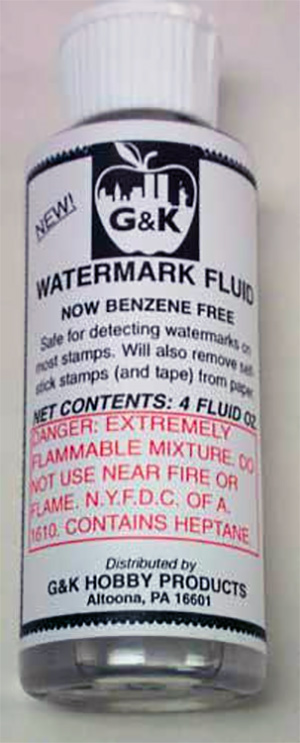
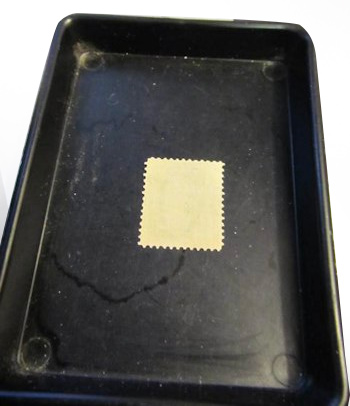
No perforations
Private Perforations
Schermack Perforations



U.S. Automatic Vending Company Perforations




Mailometer Perforations





Brinkerhoff Perforations





